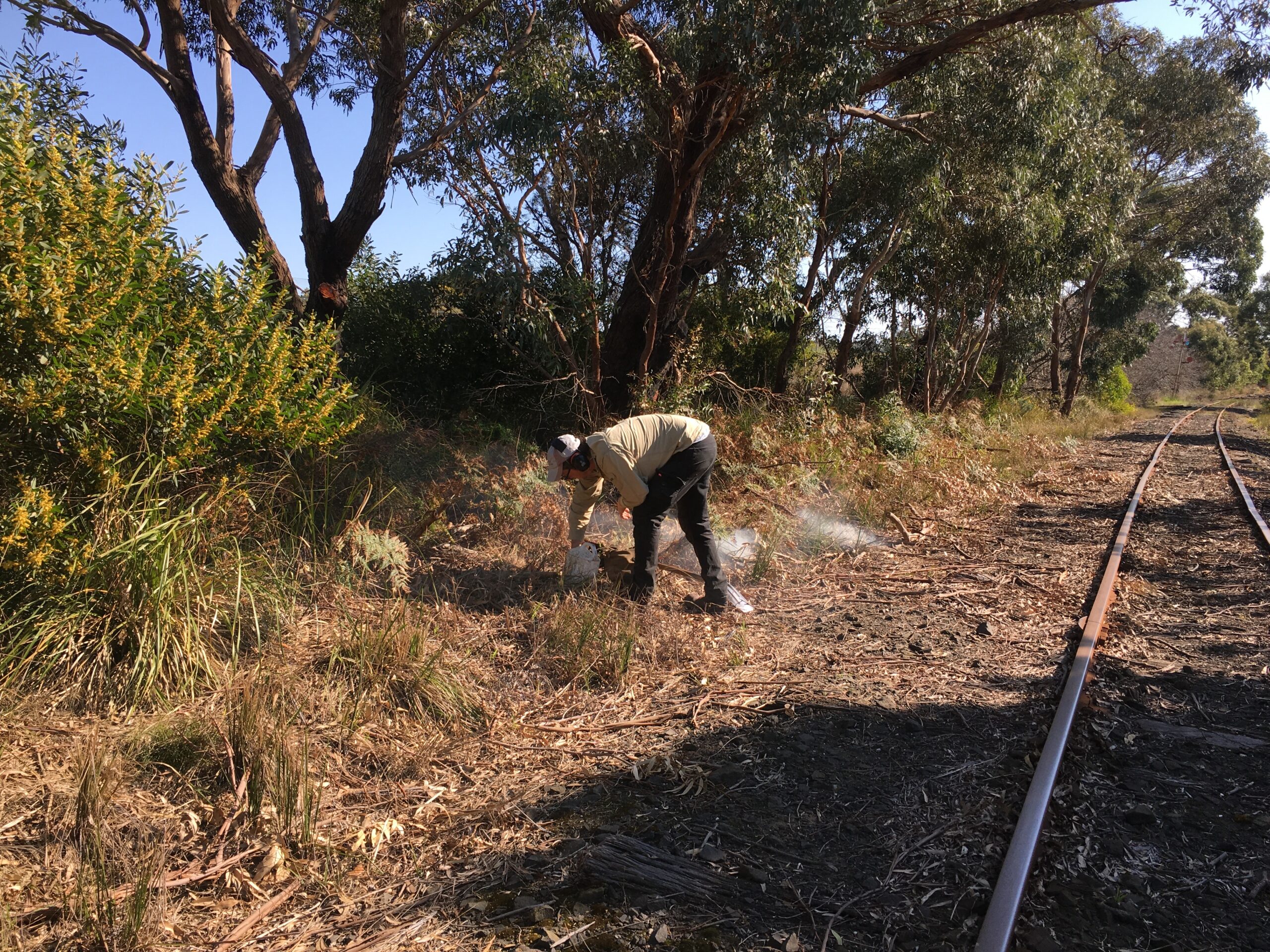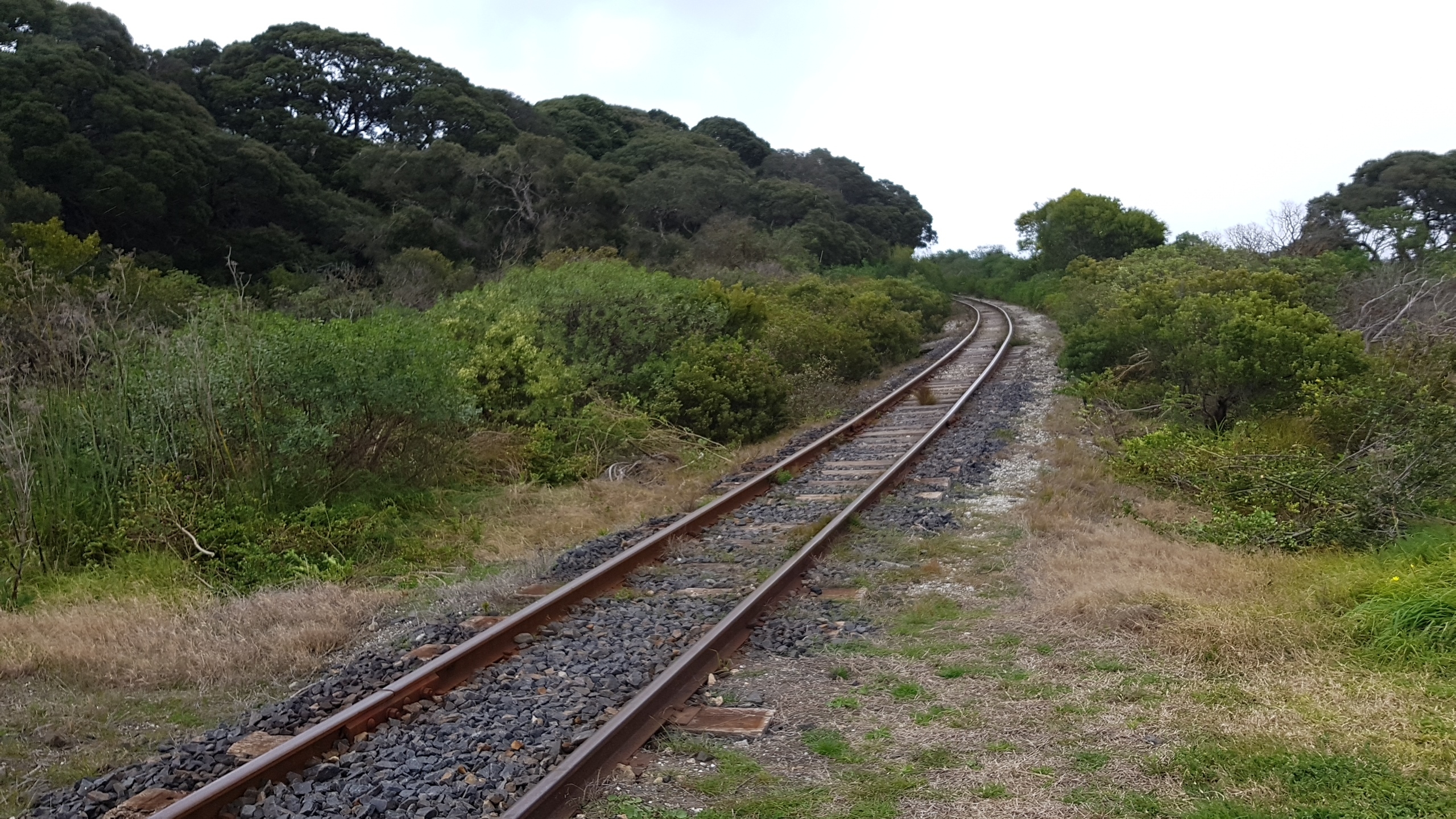Bellarine Rail Trail Revegetation and Restoration
Case Study
2019/2020 VicTrack Landcare Grant
| Grant Recipient: | Bellarine Catchment Network |
| State/Town: | Victoria |
Background
The Bellarine Rail Trail provides a continuous link of indigenous vegetation between Geelong and Queenscliff, Victoria. The trail supports significant remnant vegetation communities, rare plants and a rich diversity of wildlife. It also contains European historic and Indigenous Cultural Heritage sites. This rich diversity is threatened by weed invasion, specifically Gorse, Flax-leaf Broom, Italian Buckthorn, Blackberry, and Mirror Bush.
Since 2013, VicTrack Landcare Grants have provided funding to the Bellarine Catchment Network for its Bellarine Rail Trail Revegetation and Restoration project. This project has contributed to ongoing maintenance of project sites, as well as enabled new sites to undergo weed control and revegetation improving habitat connectivity and biodiversity.
In 2019, the Bellarine Landcare Group utilised its VicTrack Landcare Grant funding of $44,000 to address rabbits, which are abundant on the Bellarine Peninsula particularly in the peri-urban areas where newer landholders on small acreage often lack the background knowledge of rabbits as pest and how to control them.
Rabbits are a major threat to local assets as they compete with other animals and prevent regeneration of indigenous plant species, causing soil erosion and sedimentation of waterways. This damage is so invasive that the Landcare Group established a Rabbit Action Committee that identified many local landholders who lack the facilities and struggle with the cost of rabbit abatement. The Group then mobilised the community by establishing rabbit control clusters – groups of neighbours working cooperatively to control their rabbits.
In 2021-2022 the works have focused on controlling woody weeds and other selected highly invasive weeds such as Wild Watsonia. Work will also be undertaken regenerating grasslands in biodiversity hot spots. Community engagement activities include planting days and Weed, Walk and Wildflower Gawk sessions, which include weeding activities in a biodiversity hot spot, with the purpose of promoting the importance of remnant grassland vegetation on the project site.
These activities built on 2020/21 VicTrack funding that ensured ongoing environmental and social benefits, as well as ongoing vegetation management, to keep plants under eye level at all level train crossings, reducing rail safety issues on the line.
Project Outcomes
This project specifically assisted landholders to control their rabbits through implosion of burrows using a Rodenator and fumigation of the warrens. CSIRO research shows that multiple methods are critical to successful eradication of rabbits. The results will continue to be monitored.
The project helped equip and train landholders to work together to reduce the threat to sensitive indigenous vegetation and animals from rabbits.
Weeding, particularly mature woody weeds, as well as revegetation activities were also key components of this project which was assisted by over 200 volunteers. Students and teachers from two local schools as well as volunteers from four community groups participated in a local revegetation day.
Conclusion
A member of the Bellarine Landcare Group explained that the most important learning of completing on-ground work is the importance of following up and maintaining previous work whether it be planting sites or sites of weed control.
This articulates how vital VicTrack’s ongoing support has been.





